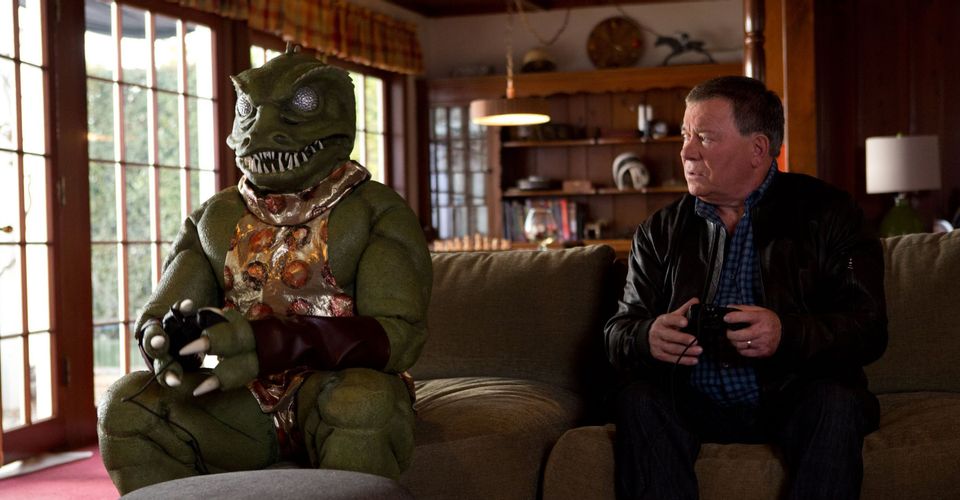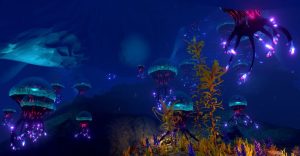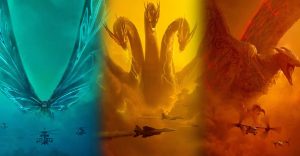Star Trek: 15 Alien Races You Need To Know About

While we here in the past are still waiting for our first confirmed encounter with extraterrestrial life, Star Trek predicts that the future will be teeming with lifeforms of all shapes and sizes. Some have gone to war against Earth, others have joined us in the United Federation of Planets, and still others lie undiscovered in the depths of the furthest galaxies. While some fans have accused Star Trek of only offering humanoids with bumpy faces, in reality, Gene Rodenberry and subsequent creators have gifted the world with an amazing variety of disparate cultures, beings, and societies; some odder than others.
Most of the Star Trek movies have used the alien races introduced in the TV series as a springboard to launch their stories upon, though one of the interesting things that Star Trek Beyond is doing is bringing the classic crew somewhere new: an undiscovered alien world, one we’ve never seen before, where they will be challenged by a new alien species that has never appeared in Star Trek canon to date.
But in order to get a handle on what’s coming up soon, it’s important to first understand the past, and to know how it might impact this new adventure for the Enterprise. Read on to learn all about 15 Alien Races From Star Trek That You Need To Know About.
15 The Swarm

Okay, so we don’t yet know a lot about the new bad guys in Star Trek Beyond, since they’ve only been teasing us with little bits and pieces of information. What we do know is that their leader appears to be a figure named Krall, played by Idris Elba (of the upcoming The Dark Tower), and he appears to have some reptilian traits. There was at one point online speculation that Krall may be a Gorn or a Cardassian, though it has been confirmed that he is the leader of a brand new race of aliens. Though this new race has not yet been identified, Zoe Saldana has revealed that the cast and crew refer to them as “the Swarm.” Whether or not this name is part of the movie, or whether this “Swarm” is from one planet or perhaps an army assembled from multiple worlds, is not yet clear.
What we do know is that Krall has some serious beef with the Federation, a deep hatred with their way of doing things, though his motivations are at this point mysterious. Krall, and one would assume his “Swarm,” believe strongly in independence, and are against the unification that the Federation represents. Whether his issues stem from tragedy or pure xenophobia will be revealed soon, and we’re looking forward to finding out.
14 Orions

First introduced in the original series, the green-skinned Orions are mostly known for their so-called “slave girls,” women who are known and sought after throughout the universe for their ability to release pheromones that are impossible for men to resist, and have been known to induce delusions, aggression, and increasingly low inhibitions. For the most part, Orion society has been shown to be cunning, opportunistic and often involved in black market activities, including the slave trade.
The big secret of Orion culture, however, is that despite what appearances may suggest, these female pheromones have actually turned their men into the real slaves, while women rule. The façade of Orion slave girls is maintained for the sake of advantageously using the women’s power, wherein the women “sell” themselves as slaves only to use their mind-altering pheromones to enslave the powerful men of other worlds, and commercially exploit them for their money, trade, and businesses.
13 Bajorans

The Bajorans, who first appeared in Star Trek: Next Generation and went on to play a central role in Deep Space Nine, are a deeply spiritual people hailing from the planet Bajor. Their religion centers around gods that they call the Prophets — timelss beings that are often referred to by non-Bajorans as the “wormhole aliens,” after Benjamin Sisko discovers them inside the wormhole — and they go to great lengths to follow what they believe to be the will of the Prophets. The dangling earrings that Bajorans wear on their right ears are a symbol of their faith, and this shared spirituality is a unifying force on Bajor.
Bajor’s history is darkened by the invasion of the Cardassians, a militant reptilian race that overthrows the Bajorans goes on to occupy their planet for 50 years. During this “occupation,” the entire Bajoran population is reduced to slaves, most of them forced to work in dangerous mines with many fatalities, while others spend decades actively rebelling against their Cardassian masters. Eventually, Bajor is freed from Cardassian control, but the irreversible damage to their culture and way of life is extensive.
12 The Q

When it comes to Star Trek aliens, there is probably no species we know less about than the Q. Seemingly an immortal, omnipotent race of beings that belong to a dimension that, at least in human language, they call the “Q Continuum,” the Q have demonstrated an ability to move freely through time, instantaneously create, transform, or eliminate matter, and teleport to any location; essentially, we’re talking about a race of godlike beings that is to humanity what we are to ants, and demonstrates a similarly apathetic attitude towards our wars, conflicts, and tragedies.
Considering the Q possess such an enormous awareness and control over all time and space, it’s rather ironic that the only Q we’ve ever seen a great deal of — who, like all other Qs, goes by the name Q — is a rather irresponsible fellow played by John De Lancie. This Q often meddles in the affairs of the Enterprise, particularly during the years wherein Captain Picard is in command, seemingly for his own amusement, as the life of an all-powerful being evidently gets rather boring.
Luckily, he does seem to have the human race’s best intentions in mind. Or so we hope.
11 Romulans

Originating from a common ancestry with the Vulcans, the Romulans are everything that their cool-tempered, logical counterparts are not. Fiery-tempered, emotional, and passionate about their causes, the Romulans have often been pitted against the Federation due to their feelings of superiority, and their contempt for the Vulcans.
Romulans have almost always remained an enemy to Starfleet since its earliest days, even as the Federation’s relations to races like the Klingons have warmed over with time, largely due to the fact that Earth aligns itself so closely with Vulcan. Romulans have generally played a somewhat less antagonistic role than more actively destructive races like the Borg, though the time-traveling Romulan known as Nero, picture above, is the villain of the 2009 Star Trek reboot, and he does plenty of damage.
10 Andorians

Though one of the founding members of the United Federation of Planets, the Andorians are at first extremely suspicious of other races, particularly the Vulcans, though these issues are resolved over time. Andorians belong to a highly militaristic society that possesses no “stun” settings on their weaponry, and is not particularly charitable unless it suits their purposes. Nonetheless, Andorians live by a code of honor, despising dishonesty, never getting involved in fights without a good reason, and they honor their traditions very seriously; if an Andorian is injured away from Andoria, one of their comrades will deliver some of their blood back to their icy home.
Though Andorians are easily recognized by their forehead antenna and blue skin, there is actually a subspecies of Andorian called the Aenar, which possesses white skin and psychic abilities, though they are also blind. The more you know.
9 Tholians

One of the weirder alien races that the Federation has come into contact with are the Tholians, a race of arachnid-like hermaphrodites with an extremely hostile opinion of other races. Though their xenophobic ways mean that little is known about their culture, they have been demonstrated as being excessively territorial, violent, and likely to kill anyone who intrudes upon the boundaries of their home system. No wonder we haven’t seen them much…
Tholians are about the same height as an adult human, standing on six legs. They possess a hard exoskeleton instead of flesh, with some sort of visible energy moving about underneath. They require a high temperature of about 404 °F to properly function, and going beneath these temperatures for any extended length of time will cause their shells to crack. Their silk is a valuable commodity across the universe, but exceptionally rare, considering the enormous difficulty of attempting to conduct business with a creature as unpleasant as a Tholian.
8 The Gorn

A race of aliens both beloved by fans and deeply underrepresented within Star Trek canon itself is the Gorn. A scaly, sharp-toothed species that resemble man-sized dinosaurs, the Gorn have so far only appeared in two episodes ever, but have never been forgotten by fandom. The lovable rubber costume probably has a lot to do with it.
The Gorn make their first appearance in an episode of the original series, when a race of aliens known as the Metron capture the captains of both the Enterprise and a Gorn ship, and force the two captains to fight to the death. Though the Gorn captain is more powerful than Kirk, the Captain still manages to outwit his reptilian counterpart, though he refuses to lay the killing blow out of mercy for the alien lying defeated before him.
Since then, the only Gorn appearance that has occurred was in a Mirror Universe episode of Enterprise, which recreated the fan-favorite creature in CGI. As stated earlier, there were some rumors that Krall in Star Trek Beyond may be a Gorn, but those have since been confirmed to be false, and a Gorn cameo was cut from the 2009 film. Someday the Gorn will finally get their day in the sun…perhaps on the small screen?
7 Ferengi

In the future that Star Trek presents, the human race no longer needs nor uses money, as the problems of limited resources have been solved, replicators are everywhere, and Earth’s society has replaced the drive for profit with the desire for union and multicultural growth. However, not all races are quite so high-minded.
The craftiest businessmen in the known universe are without a doubt the Ferengi, a race of profit-minded, greedy humanoids who, instead of following the morality-based laws of other worlds, instead go by what they call the “Rules of Acquisition.” Ferengi view the pursuit of profit as the only true purpose of life, and are unadulterated capitalists who love nothing better than getting a good deal. These two hundred and eighty five rules are the sacred foundation upon which Ferengi culture is based, though the title is merely a clever marketing ploy, since the “rules” are actually nothing more than suggestions. The Ferengi unsurprisingly have a deep loathing for such things as sick leave, overtime pay, labor unions, or anything that prevents them from exploiting their workers to the maximum extent, though most Ferengi tend to accept this, since they intend to one day create their own businesses and exploit their own workers in the same way.
Star Trek writers have stated that, in contrast to the altruistic future humans that we see in Star Trek, the Ferengi are meant to represent what the somewhat less-altruistic, profit-driven humans of the 20th century are really like. Once you see it, you can’t un-see it…
6 Cardassians

The Cardassians are among the most complicated of all Star Trek villains, their violent occupation and enslavement of Bajor often being seen as analogous to Nazi Germany in WWII, or the Soviet Union. Once a peaceful, artistic, and spiritual race much like the Bajorans, Cardassian culture was destroyed by the planet’s lack of natural resources, causing widespread famine, which led to the rise of a military dictatorship that has lasted ever since. The Cardassian’s intelligence organization, the Obsidian Order, is observed to be “one of the most brutally efficient in the galaxy,” with an observation program that monitors all Cardassian citizens to ensure that they stay loyal to the state — and making sure that anyone who isn’t loyal disappears without a trace.
Cardassian society is a totalitarian police state that rewards military achievements, total government loyalty, and fastidious record-keeping, with a legal system in which all suspects are immediately deemed guilty, sentenced to either death or a labor camp, and only given a “Conservator” — not to argue their case, but instead to prepare the accused criminal to make a moving confession of guilt which will be televised live.
Cardassians are one of the primary antagonists of Deep Space Nine, a series takes place in a formerly-Cardassian space station outside Bajor after the end of the Cardassian occupation. They are the primary villains of the early seasons, often interacting with the Federation in uneasy ways, until a deeper plunge into the wormhole reveals a greater threat on the other side…
5 The Dominion

In the Gamma Quadrant, law and order is enforced by a millennia-old superpower known as the Dominion. The Dominion comprises a vast number of planets and species, all under the control of the ancient beings known the Founders, a race of liquefied entities from the Great Link, seen above, who possess the capability to shapeshift into any form. Two thousand years ago, the Founders faced persecution from the humanoid races, which they refer to as solids. To protect themselves, they genetically engineered two slave races — the Jem’Hadar, to act as their foot soldiers, and the Vorta, to be their scientists and diplomats — and once unified, the Dominion’s power came to be so great that it overtook their entire section of the galaxy.
The Dominion’s goal is to enforce order upon a universe they believe to be chaotic, even if it means subverting entire populations to their rule. In many ways, the Dominion is like an anti-Federation: a union of multiple worlds and populations unified not by hope, but by fear of punishment.
4 Vulcans

Cold, logical, analytical and brilliant, the Vulcans have been a key component in Star Trek since the very first episode, and are the first alien race that humanity ever comes into contact with. The most defining characteristic of Vulcan culture is its utter suppression of emotions; while Vulcans are as capable of extreme emotions as humans, they practice a rationalist lifestyle wherein logic is valued, and all emotions must be purged. This philosophy was started by the Vulcan philosopher Surak, who lived in a time of massive civil wars and bloodshed. Surak’s controversial ideas regarding the value of logic and the suppression of emotion led Vulcan culture through the so-called “Time of Awakening,” and was fundamental in instilling in them the logical outlook that they are known for.
Vulcans have telepathic abilities, and are able to sense massive events that occur to the Vulcan population. These abilities are strengthened by physical contact, leading to the famous Vulcan mind meld, wherein a Vulcan can share their thoughts, experiences, and memories with another individual of almost any species.
3 Borg

Perhaps the most dehumanizing of all alien threats, the Borg is the name given to a single collective consciousness spread across an entire intergalactic network of cyborgs — driven by the need for self-perfection — that assimilates other species into themselves through the use of cybernetic implants. Like an ant colony, all serving the Borg Queen, the Borg themselves do not have individuals amongst them, nor culture, and never strive to do anything outside of serving the hive mind that they all share.
Many cultures, worlds, types of technology, and entire alien races have all been unwillingly overtaken by the Borg, who indiscriminately absorb adults, children, infants, and technology into their collective mind and body, stripping away all traces of free will, while simultaneously taking in any unique genetic and/or technologic progress, thereby allowing them to constantly adapt and change. However, the Borg have demonstrated a complete disinterest in assimilating races that they deem “unworthy,” which is one of their few blind spots.
Due to their omnivorous nature, the Borg includes the assimilated bodies and minds of many Vulcans, Klingons, Romulans, humans, and anything else that is unlucky enough to cross their path.
2 Klingons

Like Vulcans, the Klingons are one of the alien races most immediately identifiable with Star Trek, possessing the sort of unique cultural identity and history that makes the Star Trek universe so broad and fascinating. The Klingon language has been assessed by Guinness World Records as being the most popular fictitious language in the world, and there are entire works of William Shakespeare have been translated to Klingon. When it comes to cultural impact, that’s hard to beat.
Originally presented as antagonists, and later allies of the Federation, the Klingons are a race of warrior conquerors that value honor above all else. Blunt and aggressive, with no room for subtleties or debate, Klingons tend to know what they want, but should not be mistaken for savages. Klingons are a society that idealizes war and combat, but much like the Vikings of outer space, they are also a deeply religious people who make great efforts to live the sorts of lives that are deemed honorable in their culture. Klingons prefer being killed to being captured in battle, and celebrate the death of loved ones instead of mourning them, believing that to die in battle is the sort of achievement that all Klingons should strive for.
Klingons also have their own form of opera, which usually depicts tales of grim courage, honorable sacrifice, and unfulfilled love. Supposedly, Klingon opera is immensely painful for many non-Klingons to listen to.
1 Tribbles

The most adorable creature in the galaxy is certainly the Tribble, a small, furry, slow-moving creature with no external features, that emits a soft cooing sound when stroked, all of which makes them immensely endearing to humans. Klingons have a somewhat lesser opinion of the furry beings, due to the sharp allergenic reaction that Tribbles provoke in them, combined with the fact that they find their stench absolutely revolting. As a result, Klingons tend to identify Tribbles as “parasites,” and have even gone so far as to call them their “mortal enemies.”
Tribbles would probably make great pets, except for one major problem: they reproduce on a level that would make rabbits jealous. They’re born pregnant, which is their first advantage in survival, and Tribbles reproduce so quickly that they’ll quickly fill up an entire ship, requiring more and more food. Because of this, Starfleet forbids their transportation, and considers them dangerous organisms.
Like the Gorn, while Tribbles have only made a few appearances in official Star Trek lore, they’re one of the most fondly remembered Trek aliens of all time. The phrase “multiplying like Tribbles” is a part of the public lexicon. A family of real-world proteins has been named after them. Not to mention, Tribble props from the show have been sold at auction for as much as $1,200. Oh, and one once helped save Kirk’s life. We have to say, that’s pretty good for a bunch of puffballs.
—
Did we forget your favorite race/species from the final frontier? Let us know in the comments.
About The Author


















